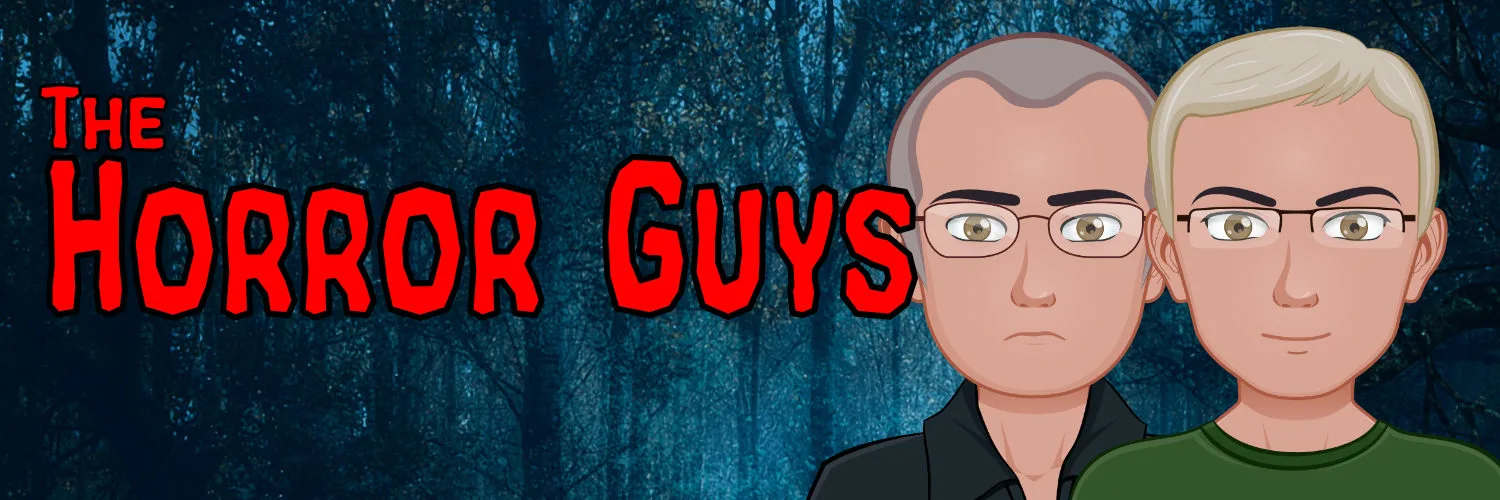- Director: Robert Wiene
- Writers: Carl Mayer, Hans Janowitz
- Stars: Werner Krauss, Conrad Veidt, Friedrich Feher
- Run Time: 1 Hour, 7 Minutes
- Link: https://amzn.to/3bSI8SQ

Synopsis
Two men sit and talk, the elder explains, “Spirits surround us on every side- They have driven me from hearth and home, from wife and child.” As they talk, a strange silent woman walks by. The younger man, Francis, explains that she’s Jane, his betrothed. He explains that his story is even more remarkable than the older man’s, and now he’s going to tell the story. Back in Holstenwall, where he was born, a traveling fair had arrived…
We then see Francis’s friend, Alan. We then see Dr. Caligari, with his big round glasses and top hat. Caligari goes to see the town clerk for a permit. The clerk, a man of power, is sitting way up high on a pedestal, making little Caligari grovel beneath him. Caligari explains that he has a somnambulist act and gets his permit.
We cut to many shots of the fair, and we finally see Caligari start his act. He presents Cesare the somnambulist. That night, the first of a strange series of murders are committed, and the first victim was the town clerk. Francis and Alan are in the crowd watching the act.
Caligari opens his cabinet, and Cesare is inside, looking dead— or very asleep. Caligari wakes him up. Cesare seems to be sleepwalking and following Caligari’s commands in his sleep. Cesare is said to look into the future, and Alan wants to know how long he’ll live. Cesare stares at him and says, “Your time is short; you die at dawn!” This was not the answer Alan wanted to hear.
On the way home, the two men talk about Jane; they both want her. That night, Alan is murdered, but we don’t see who did it. Francis remembers the prophecy of the somnambulist and goes to the police to report the crime. They start looking into the somnambulist.
Meanwhile, the police catch a killer, but it’s not Cesare. We see Caligari feeding Cesare, and he literally keeps him in that cabinet all day long. The police come to question them both, but the newspaper announces the killer has been caught, letting the two villains off the hook. The killer in custody explains that he’s a copycat and had nothing to do with the first two murders.
Jane goes to see Caligari. She sees Cesare, freaks out, and runs away. That night, he visits her as she sleeps. She wakes up, and they fight. He carries her off through the surreal landscape. The men catch up to him, so he abandons Jane to make his escape.
When she wakes up, she cries out, “Cesare!” But Francis has been watching Caligari and Cesare for hours. How could he have been involved? The police see what’s up and find a dummy in the box, not the real Cesare. Caligari runs off.
Francis goes to the insane asylum to see if they’re missing any inmates, and they take him to the doctor who runs the facility. It’s Caligari! Somnambulism has always been his special field of study. They read about a man named Caligari and his somnambulist Cesare who wandered Europe in the year 1083. When a somnambulist was admitted to the asylum, Caligari took advantage of the situation to test his theories.
They find Cesare dead in a ravine, and they carry him back to the asylum to confront Caligari. Caligari attacks the other doctors, so they put him in a straight jacket.
We cut back to modern times, where Francis tells his friend the whole story. We see that they are visiting Jane, now a mental patient in the asylum. Cesare is also there, apparently not really dead at all. And, of course, they see Caligari there as well; Francis attacks him, and they slip the straight jacket on him…
Naturally, in the end, we get a surprise. It turns out Francis was insane all along, making up a story about the man in charge of the hospital. Caligari thinks he knows how to cure Francis, the delusion madman, now.
Commentary
I watched the 4K restored version, with tinting and very creative title cards. It looked awesome! It’s available on Amazon Prime, but there’s a free version available there as well, in plain black-and-white, that’s complete but doesn’t look nearly as sharp.
The visuals in this film are what made it special. Everything is bent, twisted, off-kilter, and cartoony. There’s not a straight vertical wall in the film! Things like beams of light are painted on the walls and floor, while trees and plants are just backdrops and set pieces as well.
It’s not clear what Caligari hoped to achieve other than proving he could do it. The acting here is really over-the-top pantomime and hammy, as is often the case in silent films. Really, the best thing about this film is the set design and surreal landscape.

